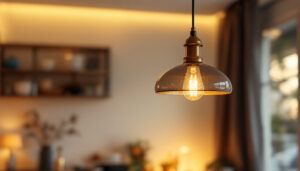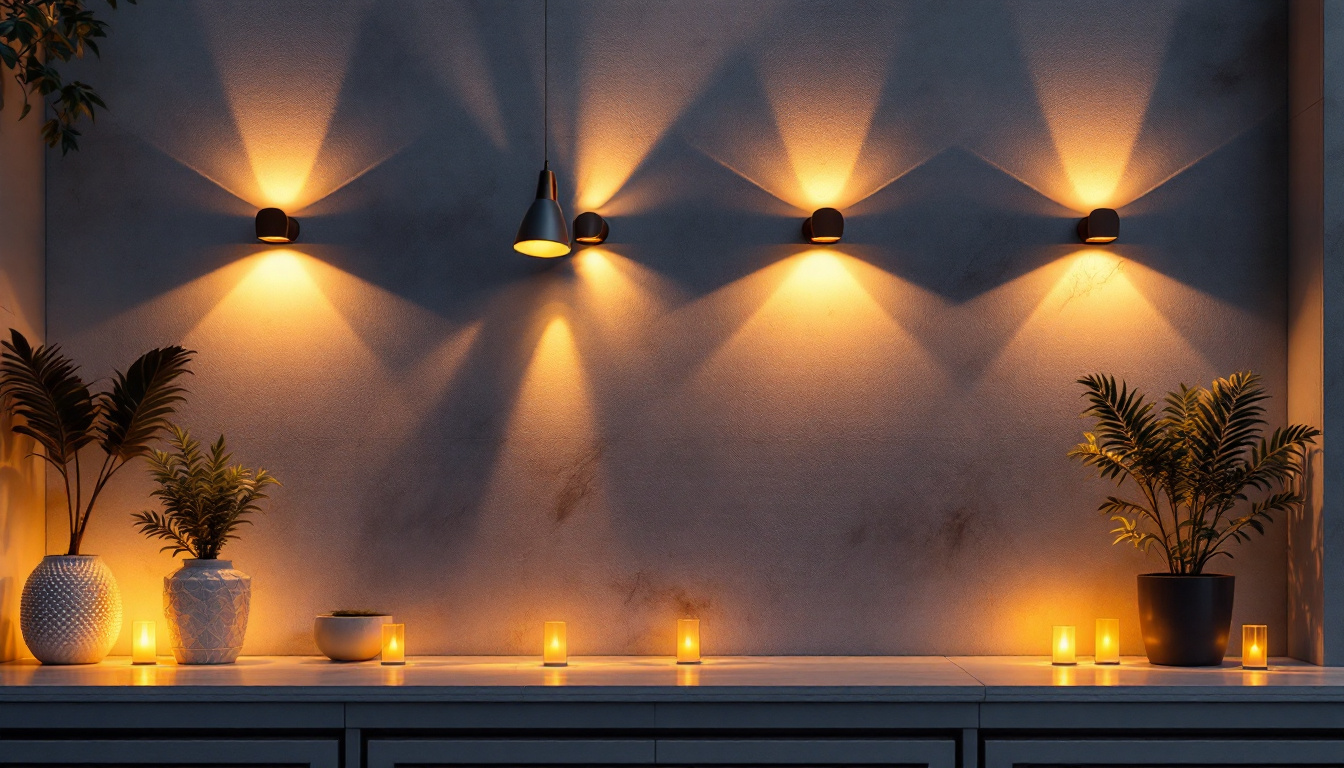

In the world of lighting design and installation, recessed can lights have become a staple choice for both residential and commercial spaces. Their sleek appearance and ability to provide ambient lighting without taking up visual space make them highly desirable. However, the dimensions of these fixtures can significantly impact not only the quality of light they provide but also the profitability of lighting contractors. Understanding the nuances of recessed can light dimensions is crucial for contractors aiming to enhance their service offerings while maintaining a healthy bottom line.
Recessed can lights come in various sizes, typically ranging from 3 to 6 inches in diameter, with some larger options available for specific applications. The size of the can light influences several factors, including light distribution, energy efficiency, and the overall aesthetic of the space.
The dimension of a recessed can light directly affects its beam spread and the area it can illuminate. Smaller fixtures, such as 3-inch cans, tend to produce a narrower beam, making them ideal for highlighting specific areas or features within a room. In contrast, larger fixtures, like 6-inch cans, provide a broader beam spread, which is more suitable for general ambient lighting.
For lighting contractors, understanding these differences is essential when designing lighting layouts. A well-planned installation not only enhances the aesthetic appeal of a space but also ensures that clients receive the desired illumination without dark spots or overly bright areas. This knowledge can lead to increased customer satisfaction and repeat business. Additionally, the placement of these fixtures can dramatically alter the perception of space; for instance, strategically positioning smaller recessed lights can create an illusion of height in rooms with low ceilings, while larger fixtures can help define larger areas, making them feel more inviting and cohesive.
Another critical aspect of recessed can light dimensions is their impact on energy efficiency. Larger fixtures may require higher wattage bulbs, which can lead to increased energy costs. Conversely, smaller fixtures often utilize LED technology, which is more energy-efficient and has a longer lifespan.
Contractors who prioritize energy efficiency in their designs can position themselves as environmentally conscious professionals, appealing to clients who are increasingly concerned about sustainability. Offering energy-efficient solutions can also open up opportunities for rebates and incentives, further enhancing profitability. Moreover, as technology continues to evolve, the availability of smart lighting options, such as dimmable and color-changing LEDs, allows for even greater control over energy consumption. This not only contributes to lower utility bills but also provides homeowners with the flexibility to tailor their lighting to suit different moods and activities, further enhancing the functionality of their spaces.
Selecting the appropriate size of recessed can lights is not merely a matter of preference; it requires a keen understanding of the specific application and the client’s needs. Different spaces demand different lighting solutions, and contractors must be adept at making these distinctions.
In residential settings, homeowners often seek a cozy ambiance, which can be achieved through smaller, strategically placed recessed lights. For instance, 4-inch cans can create a warm atmosphere in living rooms or bedrooms, while 6-inch cans may be more appropriate for kitchens or larger open spaces where brighter light is necessary. The choice of color temperature also plays a crucial role; warmer tones (around 2700K) can enhance the inviting feel of a home, while cooler tones (above 3000K) are often favored in workspaces for their clarity and focus.
On the other hand, commercial spaces typically have different lighting requirements. Offices, retail stores, and warehouses often benefit from larger fixtures that provide ample illumination for productivity and safety. For example, a retail environment may utilize 8-inch can lights to highlight merchandise effectively, creating an inviting shopping experience. Understanding these distinctions allows contractors to tailor their offerings to meet the specific needs of each client, ensuring that the lighting not only serves a functional purpose but also enhances the overall aesthetic and mood of the space.
The height of the ceiling plays a significant role in determining the appropriate size of recessed can lights. Higher ceilings may require larger fixtures or a greater number of lights to ensure adequate illumination. Conversely, lower ceilings can benefit from smaller fixtures that provide sufficient light without overwhelming the space. In addition, the angle of the ceiling should also be taken into account; sloped ceilings may necessitate adjustable can lights to direct light where it is most needed, effectively combating shadows and dark spots.
Contractors should also consider the distance between fixtures. A general rule of thumb is to space recessed lights approximately 4 to 6 feet apart, depending on the size of the can and the desired light output. This spacing ensures even light distribution, enhancing the overall effectiveness of the lighting design. Furthermore, the use of dimmers can provide flexibility, allowing users to adjust the brightness based on the time of day or activity, which is particularly beneficial in multi-functional spaces like living rooms or conference areas. By incorporating these considerations, contractors can create a well-thought-out lighting plan that meets both practical and aesthetic needs, ultimately elevating the space’s functionality and appeal.
The dimensions of recessed can lights not only influence the quality of light but also have a direct impact on installation costs. Larger fixtures may require more extensive electrical work, including larger junction boxes and additional wiring. Understanding these implications can help contractors provide accurate estimates and avoid unexpected expenses.
Installing recessed can lights involves several steps, including cutting holes in the ceiling, running wiring, and securing the fixtures. Larger fixtures may require more labor-intensive installation processes, which can drive up costs. Contractors should factor in these labor considerations when bidding on projects to ensure profitability.
Moreover, the time taken for installation can vary based on the dimensions of the fixtures. Smaller lights may be quicker to install, allowing contractors to complete more jobs in a given timeframe. This efficiency can lead to increased revenue, making it essential for contractors to choose the right size for each project.
The cost of materials also varies based on the size of the recessed can lights. Larger fixtures typically come with a higher price tag, which can impact the overall project budget. Contractors must balance the quality of the fixtures with the client’s budget constraints while ensuring that they maintain a healthy profit margin.
Additionally, the choice of trim and housing can further influence costs. Contractors should be knowledgeable about the various options available and how they align with the dimensions of the recessed lights. This expertise can help in providing clients with a range of choices that fit their aesthetic preferences and budget.
Beyond functionality, the dimensions of recessed can lights play a crucial role in the overall aesthetics of a space. The right size can complement the design elements of a room, creating a harmonious balance between lighting and decor.
As design trends evolve, so do client preferences for lighting. Many homeowners and business owners are now opting for larger, more dramatic recessed lights that make a statement. Understanding these trends allows contractors to offer solutions that align with current styles, enhancing their appeal to clients.
Moreover, the integration of smart lighting technology has further expanded the possibilities for recessed can lights. Contractors who stay abreast of these trends can provide innovative solutions that not only meet aesthetic demands but also offer functionality and energy efficiency.
Recessed can lights can be strategically placed to create focal points within a space. For instance, using smaller fixtures to highlight artwork or architectural features can draw attention to these elements, enhancing the overall design. Conversely, larger fixtures can be used to illuminate broader areas, creating a sense of openness and inviting atmosphere.
Contractors who understand how to leverage the dimensions of recessed can lights to create focal points can elevate their designs, providing clients with unique and visually appealing solutions. This expertise can set contractors apart in a competitive market, leading to increased referrals and repeat business.
In the competitive landscape of lighting installation, understanding recessed can light dimensions is paramount for contractors aiming to enhance their service offerings and improve their bottom line. The size of these fixtures influences light distribution, energy efficiency, installation costs, and aesthetic appeal.
By carefully considering the specific needs of each project and staying informed about design trends, contractors can provide tailored solutions that meet client expectations while maximizing profitability. Ultimately, the ability to navigate the complexities of recessed can light dimensions can lead to a successful and sustainable lighting business.
As the demand for high-quality lighting solutions continues to grow, contractors who prioritize education and expertise in this area will be well-positioned to thrive in the industry. Investing time in understanding recessed can light dimensions is not just beneficial for project outcomes; it is a strategic move that can significantly impact a contractor’s bottom line.
Ready to enhance your lighting installations with the right recessed can light dimensions? Look no further than LumenWholesale for all your lighting needs. We provide contractors with top-quality, spec-grade lighting products at unbeatable wholesale prices. With our extensive selection that meets the highest industry standards, you’ll find reliable, high-performance lighting for every project. Plus, enjoy the convenience of bulk buying with free shipping, ensuring you get premium lighting at the best value — without hidden fees or compromises. Elevate your service offerings and improve your bottom line with LumenWholesale. Wholesale Lighting at the Best Value.

Discover why purchasing industrial lighting in bulk from local distributors might not be the best choice.

Discover why Leviton is a must-know name for lighting contractors.

Discover the ultimate guide to exterior wall lighting with insights from top lighting contractors.

Discover why purchasing work lights in bulk from local distributors might not be the best choice.
Get notified when NEW deals are released.
Optimize your budget with wholesale discounts.
Only top-quality, specification-grade lighting products.
No additional costs at checkout - what you see is what you pay.
We understand the unique needs of contractors.